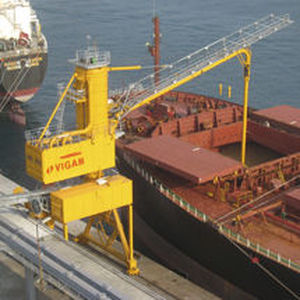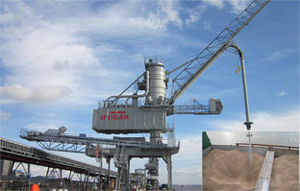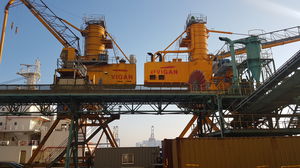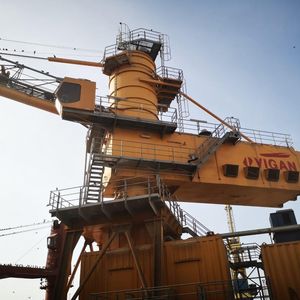
Ship unloader NIVbulk materialspneumatic
Add to favorites
Compare this product
Characteristics
- Type
- for ship
- Applications
- bulk materials
- Output
Min.: 160 t/h
(98 lb/s)Max.: 600 t/h
(367 lb/s)
Description
The above code numbers are related with capacities (in metric tons per hour) per suction pipe and under specific working conditions: please contact VIGAN for more explanations, illustrations and a full technical description of each machine model.
Those NIV type unloaders are specially adapted to medium size ships up to Post Panamax but can be also for small size vessels in some circumstances.
See how to Choose your machine according to specific unloading operation characteristics.
Most free flowing materials or slightly compacted & delicates cargoes
VIGAN pneumatic equipment are capable to handle a large variety of products with bulk densities usually between 0.5 and 1.5 . A most important aspect is the free flowing characteristics of the products such as for instance the cereals, the beans, the seeds and various products in powder with certain characteristics such as the particle size in order to allow an easy separation of the air and the product in the receiving hopper.
See those examples : Corn, Wheat, Soybeans, Cocoa beans...
but also chemicals such as Alumina, Soda Ash, ...
and also pellets of grass, of wood and other similar
For products which are compacted during their sea transport such as soybean meal, VIGAN developed a specific device : Cutting nozzle. This is frequently used when unloading soy bean meal, a high protein by-product of crushing industries.
Catalogs
*Prices are pre-tax. They exclude delivery charges and customs duties and do not include additional charges for installation or activation options. Prices are indicative only and may vary by country, with changes to the cost of raw materials and exchange rates.






